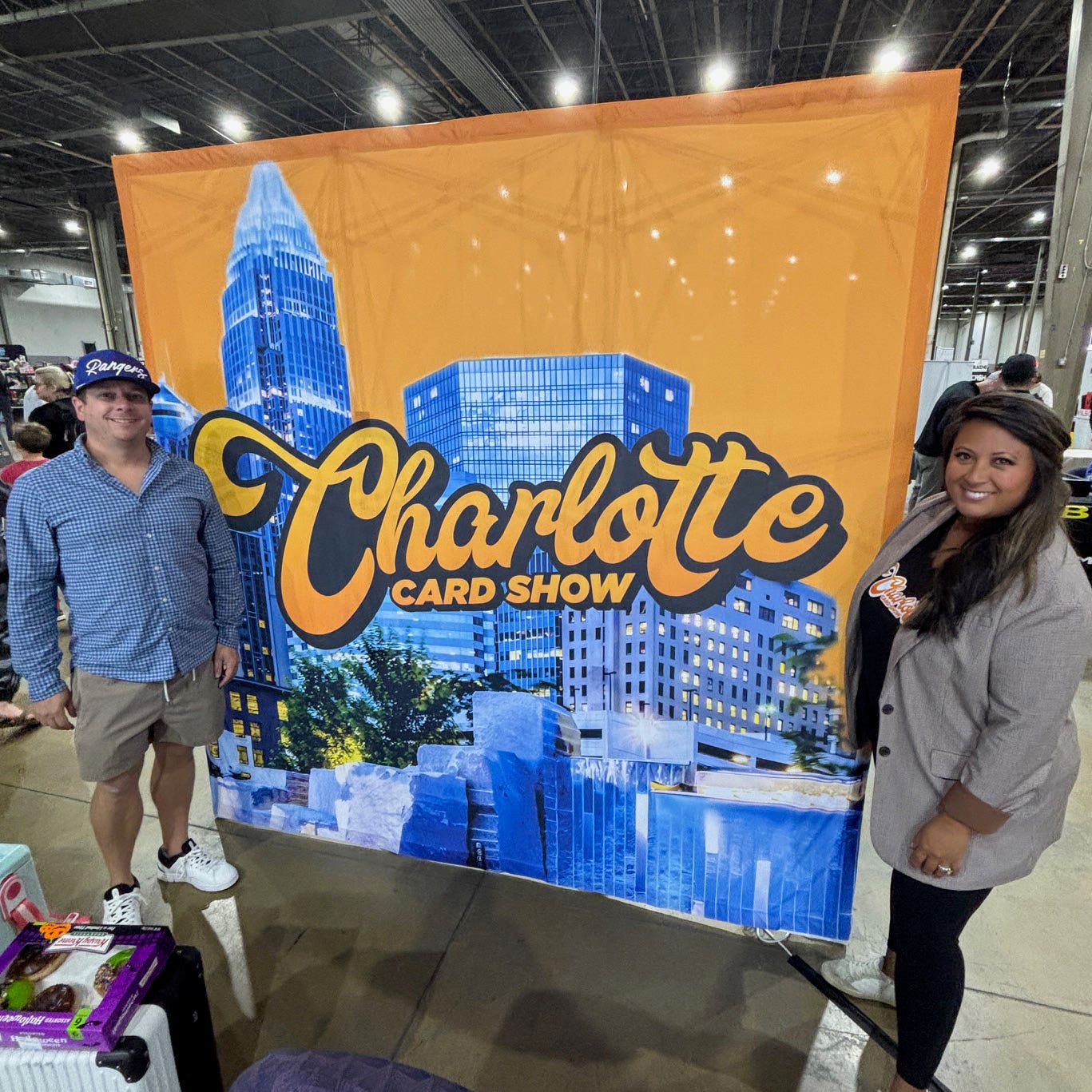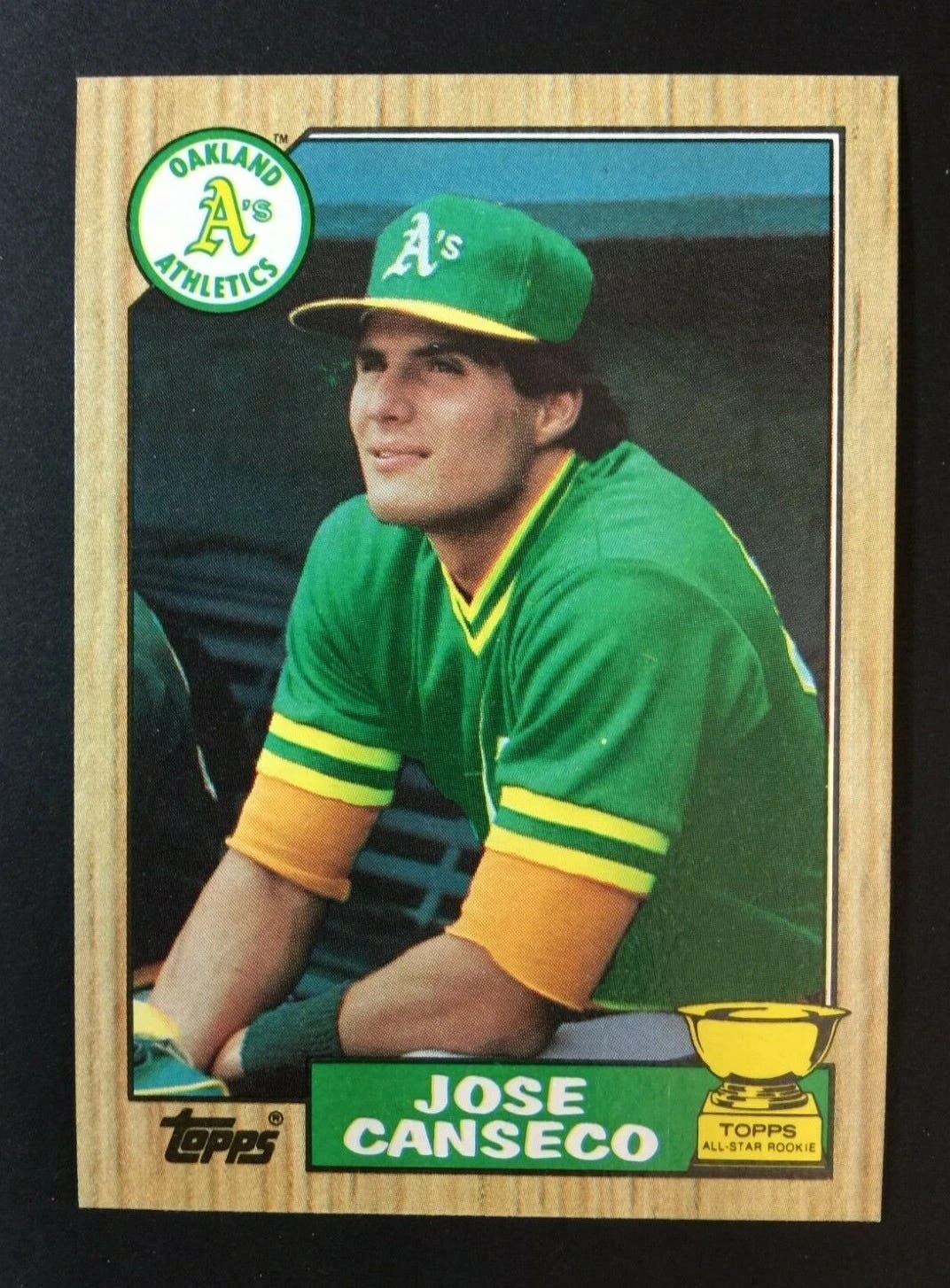Odd Collectibles
Auravision Records Gave Voice to Legends, But There’s More
Our story starts with a mysterious fire on a pier in New York City that reportedly destroys hundreds of thousands of unique talking baseball cards that showcased stars of Major League Baseball in the early 1960s. Mix in a colorful gambler and casino operator with a résumé that could have been crafted by Damon Runyon, including a link to mobster Meyer Lansky and a history of trying to overthrow or even assassinate a certain pesky communist dictator in Cuba, and you have some of the ingredients of the story of the Auravision Records. Or at least a hint of the story. If these baseball cards truly could talk, what a story they might tell. Except that some of the principals here adhere to a code of silence with pretty hefty penalties for violators.
The saga of the Auravision Records seems inextricably intertwined with the fabled Michael McLaney, whose name pops up alongside that of President Kennedy, his brother Bobby and his father, Joseph P., Mickey Mantle, Fidel Castro, Marty Glickman, Avery Brundage, Jim Thorpe and a cast of congressional investigators and subcommittees, just to name a few. Oliver Stone would love this stuff, though one supposes his normal Hollywood inclinations would be to jettison the Auravision Records angle out of a fear that moviegoers would get confused. From our perspective, the classy and probably undervalued records are the vital component of the story.
John Gray has a number of these largely overlooked items of baseball memorabilia. A very big number. He also has a lifetime of memories from his time as a major league hurler, a stint that included two years as a member of the Athletics (both Philadelphia and Kansas City varieties) and brief stops in Cleveland and back to Philadelphia with the Phillies.
He isn’t a big-time collector in the traditional sense, but he does have a big-time collection: by his own estimation he has the largest stash in the world of the Auravision Records from the 1960s.
These are “cards” only in the most expansive use of the term: they really are phonograph records, 331/3 RPM to be exact, meaning their time has essentially come and gone, at least for listening purposes. As a collectible, they would seem to have all the elements you could ask for: a) popular players, in this instance 16 great stars from the 1960s, including 10 Hall of Famers; b) age – 45 years old; c) appeal, in this instance wonderful images seemingly used exclusively for this product and nowhere else; and d) availability, meaning that for anything to capture the public’s imagination there needs to be enough out there that collectors can reasonably pursue them.
If you mix in affordability, which the 1964 Auravision Records certainly are, you would think the ticket was punched. But not so.
And here’s the ironic part: they are gorgeous, with brilliant color photographs on the front of the records themselves in some of the nicest color images from that entire decade of the 1960s.
Gray, who once roomed with Roger Maris and did a bit of cavorting with both of the M&M boys, traces the acquisition of his pile of the Auravision records to McLaney, who he said gave him about 17,000 of the records in the early 1970s.
“I knew McLaney quite well,” Gray recounted. “He was a big-time gambler and promoter who built a casino in the Bahamas and bought casinos in Haiti and Cuba. He would bet $250,000 to $500,000 in his heyday.”
McLaney’s business and gambling associations included deals with then Baltimore Colts owner Carroll Rosenbloom, whose own links to professional gamblers contributed to the cloud that hovered over the most-famous NFL game in history: the 1958 NFL Championship Game decided in sudden-death overtime.
When McLaney sued Rosenbloom for $4.2 million in 1962, charging that McLaney had been cut out of a finder’s fee on a stock deal, the testimony in the trial included damning charges against the Colts’ owner concerning gambling on NFL games. In the 1989 book Interference: How Organized Crime Influences Professional Football, author Dan Moldea cites two bookmakers in alleging that Rosenbloom had in fact bet $1 million on that first-ever sudden-death overtime championship game in December 1958.
Rosenbloom and another business associate and close friend, Louis Chesler (who was also involved in bringing casino gambling to the Bahamas), would have faced a betting line of 41/2 or 5 points in taking the Colts. The line had been 3 points a week before the game, but according to Moldea, so much money came in for the Colts in that final week that it bumped up to as much as 51/2 points.
“If it were your team and you had that kind of money at stake, would you go for the field goal and win the game but lose your bet? Or would you risk everything, go for the touchdown and win it all?” Moldea quoted a major bookmaker in Interference. Even casual football fans know that Unitas handed the ball to Alan Ameche, who plunged into the end zone from the 1-yard line, giving the Colts their 23-17 win, a 6-point margin.
On the other side of the coin, Colts quarterback Johnny Unitas always insisted that it was his call to go for the touchdown, though of course that would have changed had coach Weeb Ewbank sent in the field goal team. Ewbank, too, denied that there had ever been a directive sent to the bench from the owner about that decision, though such missives were not unknown at the time.
Ultimately, Rosenbloom was informally scolded by the NFL for his penchant for gambling and his, uh, associations. It’s at least arguable that Pete Rozelle’s stern handling of a couple of its stars from the early 1960s who got caught up in the gambling net, Paul Hornung and Alex Karras, got spanked as harshly as they did in part because of Rosenbloom’s earlier activities.
McLaney, who was also was the manager of Meyer Lansky’s Miami Beach dinner club, ultimately saw his lawsuit against Rosenbloom dismissed.
McLaney’s name came up again in a 1967 Life magazine article that again outlined a link to organized crime that did nothing to diminish the Irishman’s aura. He was also one of the movers and shakers behind the CIA’s frantic and occasionally seriocomic two-decade effort to either overthrow, disrupt, discredit or simply blow up Fidel Castro.
McLaney’s role in many of those zany plots was cited in numerous investigations that even found a linkage to Lee Harvey Oswald, the disaffected loner who, if we are to believe the Warren Commission Report, acted alone in assassinating President Kennedy in Dallas in November 1963. The plotting of anti-Castro exiles reportedly was known to have agitated Oswald, most specifically an FBI raid that seized more than a ton of dynamite, bomb casings, napalm and other material at William McLaney’s home in Ponchatrain, New Orleans. He was Michael McLaney’s brother, and it was alleged that the munitions were stashed there by the casino operator. No one was ever charged in this July 31, 1963, raid, though it had been reported in the New Orleans Times-Picayune on three days in early August.
With that kind of résumé alongside his epic gambling exploits, it would be hard to think that McLaney could have found time for dabbling in a sports memorabilia hobby that was still a couple of decades away.
Sidebar: Did FDR's Son and McLaney Promise $100,000 to Whack the Bahamian Prime Minister?
A Senate subcommittee headed by Senator Henry “Scoop” Jackson in 1973 took testimony from a convicted stock broker who accused Elliott Roosevelt, the second son of President Franklin Delano Roosevelt, of plotting the assassination of Lynden Pindling, prime minister of the Bahamas.
According to the article “Accusing a Roosevelt” in the Oct. 1, 1973, issue of Time magazine, Louis P. Mastriana, a former Roosevelt employee, testified to the subcommittee that “in 1968, he had been offered $100,000 by Roosevelt, the former mayor of Miami Beach, and Michael McLaney, a reputed associate of gambling czar Meyer Lansky, to kill Pindling after the prime minister refused to grant McLaney a gambling license in exchange for campaign contributions.” According to the House Select Committee on Assassinations (HSCA), that alleged campaign contribution was for a tidy $1 million.
Roosevelt denied the allegation, and Jackson’s subcommittee never recommended charges to the Justice Department.
Sidebar: Famed Broadcaster Handled Auravision Interviewing Duties
With all the technological advances in the record business over the last 40 years, most baseball fans couldn’t play the Auravision Records if they wanted to; most serious collectors wouldn’t play them even if they did have the equipment, since that would mean punching out the hole in the middle of the record. Also of some potential angst for that group would be the idea of running a needle along the grooves and thus risking the scratching that used to bedevil us baby boomers big time 50 years ago.
Johnny Gray and Dave Friedkin, hopeful of being able to market the tidy inventories of the records at their disposal, have that covered as well, though, offering a cassette transcript of the recordings, which in 14 of the 16 records from 1964 is an interview with the player by famed broadcaster – and 1936 Olympian – Marty Glickman.
The interviews were done in the relaxed atmosphere of spring training, and Glickman recalled in a 1993 interview in these pages that all had taken place in Florida, with none thought to have been done in Arizona.
The five-minute interviews were conducted by a man who was arguably more famous at the time than some of his interviewees. Glickman, a sprinter who was scheduled to run in the 400-meter relay that year in Berlin, was pulled from the race along with teammate Sam Stoller, presumably because they were Jewish.
As history recorded, their replacements, Jesse Owens and Ralph Metcalfe, wound up with gold medals that would likely have gone to Glickman and Stoller. Avery Brundage, the head of the U.S. Olympic Committee who would later rule the International Olympic Committee with an iron fist for two decades, was thought to have ordered their removal from the race out of his fear that their presence would offend Adolph Hitler.
Brundage, an American who would later offer praise of the Nazi regime at a Madison Square Garden rally, was in the middle of some of the most controversial moments in Olympic history over a six-decade span. That started with the 1912 Olympics in Stockholm, where Brundage competed against teammate Jim Thorpe in the pentathlon and decathlon, finishing 6th and 15th, respectively.
It was revealed after Brundage’s death in 1975 that he had been the source who notified the IOC about Thorpe’s “professional” status from playing baseball.
Brundage fought against efforts to reinstate Thorpe’s medals, which didn’t happen until 1982, seven years after the USOC and IOC czar’s passing.
Glickman, who was also an All-America football player (and he played basketball, too) at Syracuse, had brief careers in both professional football and basketball before turning to the broadcast booth.
In the 1993 SCD interview, he explained that the tenor of the times for major league players had been much different three decades earlier when the Auravision interviews had taken place.
“The players weren’t besieged by the media like they are nowadays,” Glickman said. “It was a different era. Other players on the team would yell at the guy I was interviewing, trying to get him to laugh. It was a very relaxed atmosphere.”
Glickman interviewed 14 of the 16 players in the 1964 issue. Warren Spahn had talked with fellow announcer Chuck Thompson and Rocky Colavito had talked with Ernie Harwell. Pete Ward was the only player Glickman could not remember talking to.
Glickman said the reason he didn’t do Spahn and Colavito was that the interviews may have been done earlier in spring training and he may have still been working basketball at the time.








